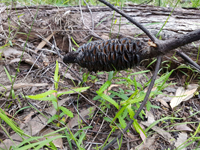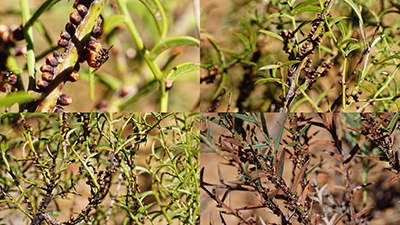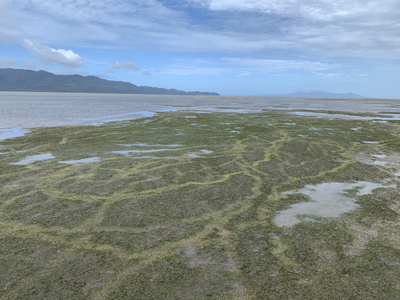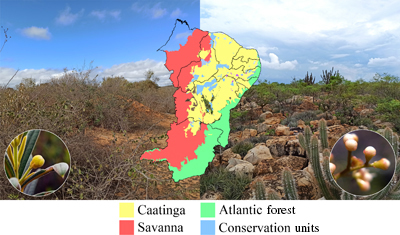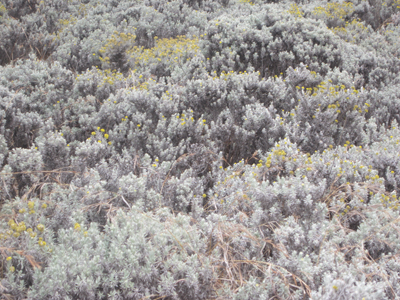The protocol to estimate photosynthetic-pigment content was optimized in Eucalyptus urophylla and Khaya senegalensis seedlings by using different extraction methods to evaluate its relationship with values estimated using chlorophyll meters. In both species, a strong positive correlation was observed between estimated values and the values from extraction that used DMSO saturated with CaCO3 at 65°C. Photograph by the authors.
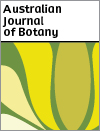
Australian Journal of Botany
Volume 72 Number 8 2024
A giant carnivorous tropical pitcher plant is described as new to science from Sabah, Malaysian Borneo. Named after the orangutan genus Pongo on account of its abundant covering of long, dark, rusty red hairs, Nepenthes pongoides naturally occurs in low numbers with fewer than fifty plants recorded. Coupled with the severe threat of poaching for the horticultural trade, not to mention vulnerability to single extinction level events such as wildfire, the species is assessed as critically endangered against IUCN criteria. Photograph by Alviana Damit.
BT24050 Abstract | BT24050 Full Text | BT24050PDF (4.9 MB) Open Access Article
Populations of Banksia cunninghamii are declining as climate change drives more frequent, severe and widespread fires. Research on this species after south-eastern Australia’s 2019–2020 wildfires found that plants are killed by fire, with a low chance of seedling regeneration where severe fires burned eucalypt canopies, or the previous fire was less than 12 years ago. Large areas are no longer likely to support Banksia cunninghamii, and management is needed to protect juvenile plants until they produce seed cones. Photograph by Annette Muir.
Understanding host usage is a significant aspect of understanding the ecology of parasitic plants. For endoparasitic plants host use is strict, although for Pilostyles, there are several species within the strict set of hosts that are used. Because of this, resource-usage functionsprovide a means to assess host usage in the genus Pilostyles. This study presents the first use of these functions in assessing Pilostyles hamiltoniorum to help understand host utilisation throughout its distribution. Photograph by Ryan Craig (2021).
BT24026 Abstract | BT24026 Full Text | BT24026PDF (1.2 MB) Open Access Article
Tropical seagrasses provide important ecosystem services, but they are dynamic habitats under threat from multiple stressors. Functional trait-based approaches have the potential to increase our understanding of these dynamics. We present a comprehensive trait database for seagrasses in tropical Queensland, with a focus on services and resilience. Photograph by Chieh Lin.
BT24017 Abstract | BT24017 Full Text | BT24017PDF (1.5 MB) | BT24017Supplementary Material (2.8 MB) Open Access Article
Brazil’s Caatinga is an ecologically diverse region teeming with unique plants. In this study, we have shed light on the gaps in our understanding of this extraordinary biome, uncovering Myrtaceae species diversity. We recorded higher species diversity than previously estimated and identified areas of greater richness and insufficient collection effort. This research has paved the way for targeted conservation efforts, safeguarding vital ecosystem services and ensuring a sustainable future for both nature and communities in the Caatinga. Photograph by Paulo Sérgio Santos-Neves.
Five blocks dominated with Helichrysum splendidum were identified and, in each block, four plots were established by cutting and in other plot cutting and uprooting the stems of H. splendidum. High abundance of orchids was found in plots with a low Helichrysum cover. The orchids had physiological differences across the plots. Photograph by Christopher Mgimba.





